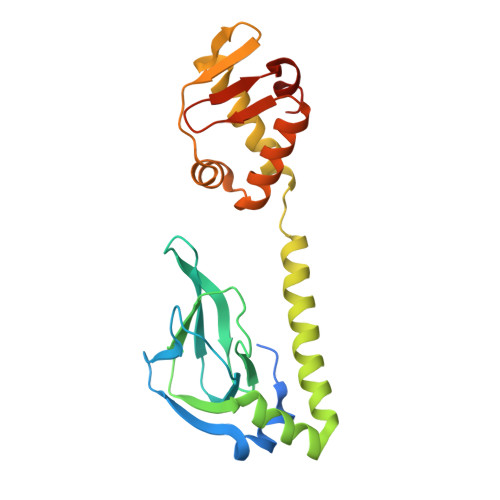CprK Crystal Structures Reveal Mechanism for Transcriptional Control of Halorespiration.
Joyce, M.G., Levy, C., Pop, S.M., Biehl, B.D., Doukov, T.I., Ryter, J.M., Mazon, H., Smidt, H., van den Heuvel, R.H., Ragsdale, S.W., van der Oost, J., Leys, D.(2006) J Biological Chem 281: 28318-28325
- PubMed: 16803881
- DOI: https://doi.org/10.1074/jbc.M602654200
- Primary Citation of Related Structures:
2H6B, 2H6C - PubMed Abstract:
Halorespiration is a bacterial respiratory process in which haloorganic compounds act as terminal electron acceptors. This process is controlled at transcriptional level by CprK, a member of the ubiquitous CRP-FNR family. Here we present the crystal structures of oxidized CprK in presence of the ligand ortho-chlorophenolacetic acid and of reduced CprK in absence of this ligand. These structures reveal that highly specific binding of chlorinated, rather than the corresponding non-chlorinated, phenolic compounds in the NH(2)-terminal beta-barrels causes reorientation of these domains with respect to the central alpha-helix at the dimer interface. Unexpectedly, the COOH-terminal DNA-binding domains dimerize in the non-DNA binding state. We postulate the ligand-induced conformational change allows formation of interdomain contacts that disrupt the DNA domain dimer interface and leads to repositioning of the helix-turn-helix motifs. These structures provide a structural framework for further studies on transcriptional control by CRP-FNR homologs in general and of halorespiration regulation by CprK in particular.
- Manchester Interdisciplinary Biocentre, P. O. Box 88, Manchester, M60 1QD, United Kingdom.
Organizational Affiliation:
















